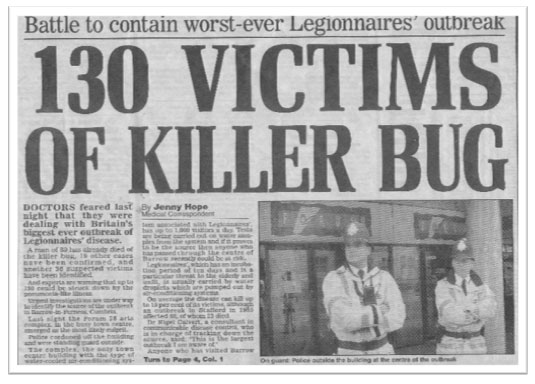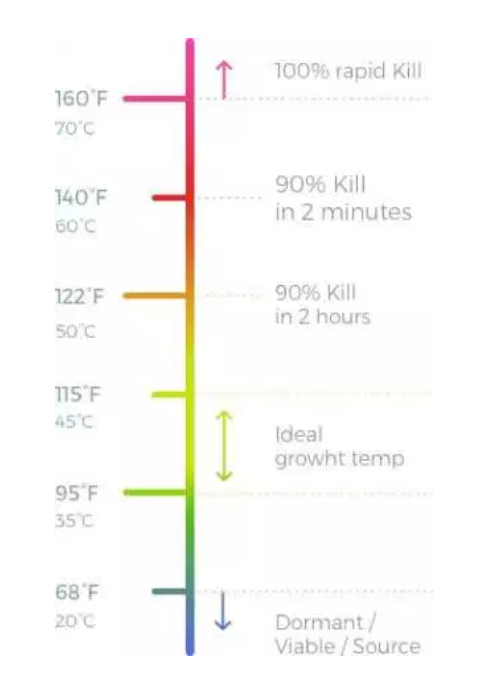
Legionella is a type of pathogenic bacteria (basically bacteria that leads to infection) that causes a range of pneumonia-like illnesses such as Legionellosis and Legionnaires’ disease. This happens when small droplets of water that contain the legionella bacteria are inhaled, often through water sprays or mists. There is a risk that your water systems may have this bacteria in the water, causing great potentially fatal hazard to your employees.
At the moment you can’t get specific certificates or registers to prove Legionella safety. But it’s important you understand the risks and put measures in place to control them.
This guide provides you with some practical advice on how to fulfil your responsibilities.
Firstly there are two documents that are extremely useful in understanding, namely Legionnaires’ disease - The control of Legionella bacteria in water systems (download here), BSRIA have also published Legionnaires' Disease Risk Assessment dated 2015 referenced (BG57/2015) advising on best practice on assessing risk. Fundamentally, they focus on the following;
The most serious condition arising from Legionella bacteria is Legionnaires’ disease which affects between 200-300 people each year in the UK. The disease is most common amongst those over the age of 50 who have a weaker immune system and are more susceptible to illness.
Legionella bacteria are most commonly found in man-made water systems (such as water-based air-conditioning systems such as chilled water systems, domestic hot water tanks, like those that supply baths and showers and whirlpool baths).
In fact, they can thrive in any place where water is maintained at a constant temperature.
There are certain conditions which increase the risks from Legionella. These are:
Temperatures range for Legionella:

The bacteria is killed over a period of two or so hours by increasing the temperature of the water to around 55 degrees Celsius.
A sample of water from these relevant systems are taken to a laboratory for testing and a result sheet / certificate of the composition of water is provided including the parts per million of various bacteria such as TVC and Legionella. A separate sample for Pseudomonas (also a risk factor based on micro-biological testing) can be undertaken using a separate sample basis.
Unlike Gas Safety, there are no specific landlord certificates or registers that you can join to prove Legionella safety. Chemical testing of closed water and domestic water systems are however recommended as also recommended as part of a water hygiene risk assessment.
While these test certificates are not mandatory, the impact they have on safety could be invaluable.
The broad requirements for controlling Legionella bacteria in water systems are:
Assessments should be reviewed at least biennially and when they may no longer be valid, for example when changes are made to the use of the building in which the water system is installed. Where risk assessment identifies a significant risk, you should arrange for the system to be disinfected immediately, either thermally or by chemical means.
A risk assessment is simply a careful examination of what could cause harm to people. This way, you can weigh up whether you have taken enough precautions or need to do more.
The main steps in the risk assessment process are:
Legionella risk assessment records should include details about:
Safewater.org has produced a handy factsheet with more information on their website here.
Karsons undertake auditing of all building documentation where water hygiene is covered in a unique section. Here we review the water hygiene risk assessment initially, but critically water temperatures, chemical and bacterial testing is also reviewed to ensure safe water systems.
Karsons Consulting are members of the Chartered Institute of Building Services Engineers, The Association of Consultancy and Engineering, British Institute of Facilities Managers and the Building Services Research and Information Association.